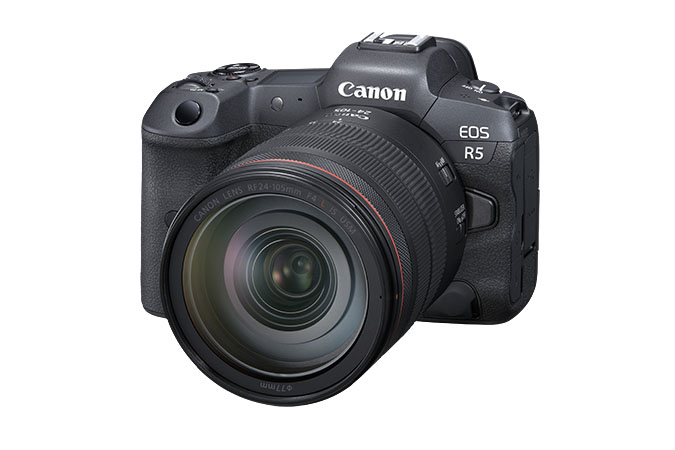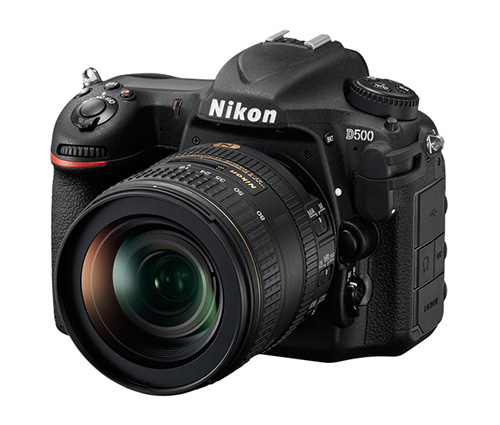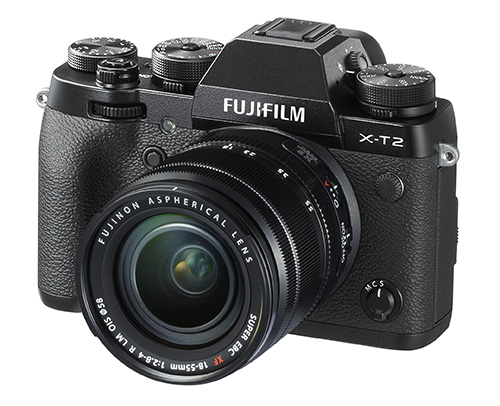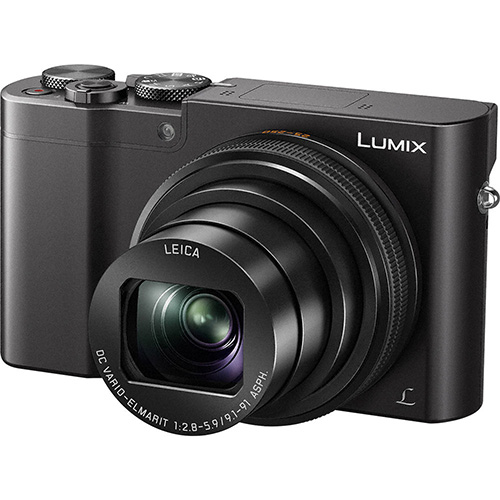The holiday season is here and I am getting the usual questions about which digital cameras I recommend. In every price range there are some cameras that are better designed than others. How do you find them? That is what this article is all about.
Posted November 17, 2020.
The camera lists below will point you to the highest rated models. You can start with these lists and then narrow it down to a camera with the specific features you are looking for. I will help you in that regard with some information and advice on choosing a camera. The lists below will be updated throughout the holiday season as new reviews for highly rated cameras become available.
There are two or three steps to choosing a camera.
Step 1. Decide on the type of digital camera you want (Point and Shoot, Mirrorless ILC, or DSLR).
Step 2. Pick a camera of that type that has a high rating at DP Review.
Step 3 (optional). Rent the camera and use it before you buy it.
Step 1. Choosing the Type of Camera You Want
Your first decision is to decide which of three broad categories of digital cameras is best for you.
Not long ago, there were two broad classifications of digital cameras, the digital single lens reflex (DSLR) cameras with interchangeable lenses, or fixed lens, point-and-shoot (P&S) cameras. Over the last several years a whole new category has grown up, mirrorless, interchangeable lens cameras (ILC).
DSLR
DSLR cameras have a reflex mirror that bounces light up through a pentaprism (or mirror box) and out through an optical viewfinder. This allows you to see through the viewfinder exactly what the camera sees through the lens. When taking a photo, the mirror moves up out of the way (hence the name “reflex”) so the light can strike the digital sensor. One of the key advantages of a DSLR is the ability to change lenses. Most DSLRs give you a wide variety of lenses and accessories for tackling specialized photographic projects. No matter what you want to do, there is a lens or accessory to help you do it. As a group, DSLRs are faster and more responsive than P&S cameras. DSLRs excel at fast action, high speed photography. They also give you “cleaner” images with less digital noise when shooting in low light at high ISO settings (more about ISO settings on the bottom third of this article). The downside is most DSLRs are usually bigger, heavier, and more expensive than most P&S and ILC cameras.
With so many DSLRs receiving high ratings, which camera should you choose? The answer usually comes down to lenses and systems. If you have a lens or set of lenses that you like, get a digital camera that will take the lenses you want to use.
If you need certain specialized lenses, then pick a camera brand that has the specialized lenses you need.
If you need highly specialized equipment, you will want to go with a manufacturer that provides a wide range of specialized accessories.
The two most extensive and comprehensive lens and accessory systems are made by Canon and Nikon. If you think you will want specialized gear some day, like tilt-shift lenses, or a 5x magnification macro lens, Canon and Nikon are the brands to go with.
On the other hand, if you don’t have specialized needs, almost any high-rated camera from any manufacturer will work very well. Check the lists below and the reviews at DP Review to narrow down your choices. Pick out several models and brands of cameras in your price range. Go to a well equipped camera store and try the cameras out to see how they feel and work in your hands. Narrow down your choices to your top two models, but don’t buy a camera just yet.
Rent both of your favorite models (with a lens) for a few days to a week and use them a lot. Online camera and lens rentals have become quite reasonable. A few days to a week with each camera will tell you which one you most like to work with. And remember, you can’t go too far wrong with most any recent, high-rated DSLR.
Mirrorless Interchangeable Lens Cameras (ILC)
Mirrorless ILC cameras mix some of the features of DSLRs and Point and Shoot cameras. For some photographers, they combine the best of both worlds. Many of them are smaller and lighter than DSLRs (like point and Shoot cameras), but they do take interchangeable lenses like a DSLR. Some ILCs show you an electronic image on the back of the camera so you have to hold the camera away from your face to see the image, just like with most P&S cameras. Others have an electronic eye level viewfinder so you hold the viewfinder to your face just like you would with a DSLR which is much better for wildlife, sports, and action photography. Mirrorless ILCs have come long way over the last few years and some of them, like the Sony Alpha 7R IV, handle just like a DSLR and are in many ways as good as the best DSLRs.
Mirrorless ILCs have come such a long way that the top models are competitive with the best DLSR cameras. In the ratings below I now list these two camera groups together. Only the Point and Shoot (fixed lens) camera are listed separately.
Point-and-Shoot (P&S)
Point-and-shoot cameras used to be smaller, lighter, and less expensive than other kinds of digital cameras, and many of them still are. But bigger, fuller featured, more expensive models are appearing with regularity. They don’t have a reflex mirror and they have one, fixed (non-interchangeable) lens. They are perfect for people who want a convenient, all-in-one camera, with no need for a wide variety of lenses or accessories. If you want to push a button and let the camera do the rest (at least most of the time), a P&S is probably your best choice. Some P&S cameras give you a lot of manual controls for those occasions that you want to make the photographic decisions. The size variation is huge from smaller than a deck of cards to as big as a smaller DSLR. The right P&S fixed lens camera can give you convenience and simplicity when you want it an a lot of controls if you need them. They vary widely in the focal length range their zoom lenses cover. Decide on the features that are most important to you, then pick a highly rated camera that has those features.
P&S and Mirrorless ILC Features
Within both groups, Mirrorless ILC and P&S fixed lens cameras can be hugely different in terms of functionality and feature set. In both groups some are almost as big as a DSLR, others are shirt pocket tiny. Some are pretty full featured and some have a more limited feature set. If you are going to be in auto mode most of the time, a full feature set wont be important to you. But if you are a take charge, choose the controls kind of person, you will want a camera with a full feature set.
In the P&S group, some have lenses with a fairly limited focal length range. Others have a very long zoom lens range so you can zoom in on your child or grandchild at a sporting event, even if they are on the far end of the ball field. If you want a “carry anywhere” shirt pocket camera, your choice will be very different than if you want to photograph wildlife at a distance with a camera that has a long range zoom lens. Make your focal length decision wisely and check out the focal length examples in this article. Once you buy a P&S you are stuck with that lens. With an ILC camera you can buy whatever lenses you want so focal lengths wont be a limiting factor in your initial purchase decision.
Decide on what you want a camera to do and then read some full reviews at DP Review before you make your final camera choice. It wouldn’t hurt to look at the cameras on your short list at a local camera store. Don’t get talked into buying a camera that you haven’t thoroughly checked out ahead of time at DP Review. There are some really poorly designed cameras out there, no matter how pretty they look, how much they cost, or how much the sales person is trying to get you to buy it.
Step 2. Pick A Camera with a High Rating that is In Your Price Range
This is the time consuming step. It will take a while to find a quality camera in the type you want (step 1) that is in your price range.
DP Review is my favorite camera review site. In addition to individual camera reviews, DP Review puts out buying guides on a periodic basis to help you sort through the best cameras by type.
They have been doing this for a long time. I recommended the purchase of a camera that receives a “Gold Award” or a “Silver Award” with DP Review’s new rating system, or a “Highly Recommended” rating under the old system. DP Review also gives cameras an overall percentage score, but the scores are only comparable within the same class of cameras. With rare exceptions noted in the list, I rarely include cameras that don’t receive a Gold or Silver rating from DP Review.
The cameras listed below received a Gold or Silver Award from DP Review under the new system or a “Highly Recommended” rating under the old system. I also included the overall percentage score. You can compare percentage scores within a group, but not between groups. In other words, A 90% DSLR is better than and 80% DSLR, but a 90% P&S is not necessarily better than an 80% DSLR.
Cameras are listed back through 2012 since there are some excellent older model camera models that are still available on the used market (like the Canon 5D Mark III).
Don’t go by ratings alone. Be sure and read the reviews for the camera models that interest you!
Step 3 (optional). Rent Before You Buy
Beyond quality concerns, there are some intangbile to buying a camera. How does it feel in you hands? Do you like the control layouts? Is it fun to work with? Two equally well made cameras can feel different to use. It is a personal thing for every photographer. That is why it is a good idea to try it before you buy it.
Before you plunk down a lot of money for a new camera, I suggest you rent the model (or models) you are interested in before you make your final decision. Compared to the cost of buying a new camera, renting a camera for a few days to a week is a great way to be sure you like working with the camera. Sometimes people narrow down their choices and end up with two models. Why not rent both? That way you can be sure which model you like using the best.
I highly recommend LensRentals.com. They are one of the best of the best cameral rental companies. At ResellerRatings.com, as of today (November 22, 2019) LensRentals.com has a 5 star rating (the highest) with an average review score of 9.8 rating on a scale of 10, with 3,445 reviews.
LensRentals.com rents cameras (still and video), lenses, flashes, studio lights, tripods, tripod heads, and more. They also a try it and keep it option. If you rent the camera (or lens) and want to keep it, the rental prices comes of the price of the camera. If you are interested in try it and keep it option, tell them before you rent the camera. More information on try it and keep it is here.
Buying These Cameras Online
You can save a lot of money by buying online. You can find most of the more recent DSLR and ILC camera models listed below at my Amazon powered photography store. Go to the Canon and Nikon section, the Olympus, Pentax, and Sony DLSR section, and the Fujifilm, Olympus, Panasonic, and Sony ILC section.
In addition to Amazon, B&H Photo and Adorama, both in NYC, are excellent camera stores for buyoing new gear.
If you are interested in Canon gear you can save a lot of money buying refurbished Canon cameras and lenses directly from Canon, and you get the same warranty as buying a new camera. Refurbished Canon gear is available for a wide variety of models and price ranges. For more info, read this article.
If you are looking for used cameras and lenses, check out Adorama in NYC, or KEH Camera in Atlanta.
The lists below go all the way back to 2010. I go back that far in case you might be looking for a high quality but older camera on the used market. An example is the excellent Canon 7D which came out in 2010. It is still a great camera.
THE TOP RATED CAMERA LISTS
The Best DSLR and Mirrorless Interchangeable Lens (ILC) Cameras – 2020
Canon EOS R5 – 91% – Gold
Canon EOS R6 – 90% – Gold
Canon EOS 1DX Mark III – 92% – Gold
Fujifilm X-T4 – 88% – Gold
Fujifilm X-T200 – 82% – Silver
Fujifilm X-A7 – 81% – Silver
Nikon Z5 – 91% – Gold
Nikon Z50 – 85% – Silver
Nikon D780 – 87% – Silver
Olympus OM-D EM-1 Mark III – 83% Silver
Panasomic Lumix DC-S1H – 90% – Gold
Sony a9 II – 90% – Gold
Sony a7C – 86% – Silver
The Best Fixed Lens (P&S) Cameras – 2020
Fujifilm X100V – 86%b – Gold
Nikon Coolpix P950 – 79% – Silver
Olympus tough TG-6 – 76% – Silver
Panasonic Lumix DC FX-1000 Mark II – 83% – Silver
Sony ZV-1 – 85% – Gold
The Best DSLR and Mirrorless Interchangeable Lens (ILC) Cameras – 2019
Canon EOS 90D – 85%
Canon EOS Rebel SL3 – 79% – Silver
Canon EOS RP – 83% – Silver
Canon EOS M6 Mark II – 85% – Gold
Canon EOS M200 – 79% – Silver
Fujifilm X-Pro3 – 85% – Silver
Fujifilm GFX 100 – 90% – Gold
Fujifilm GFX-50R – 84% – Silver
Fujifilm XT-30 – 84% – Gold
Nikon Z6 – 89% – Silver
Olympus OM-D E-M1X – 85% – Silver
Olympus OM-D E-M5 Mark III – 82% – Silver
Panasonic Lumix DC-G95 – 83% – Silver
Panasonic Lumix DC-S1R – 89% – Silver
Panasonic Lumix DC-S1 – 88% – Silver
Sony a7R IV – 91% – Gold
Sony a6600 – 83% – Silver
Sony a6400 – 85% – Gold
Sony a6100 – 82% – Silver
The Best Fixed Lens (P&S) Cameras – 2019
CanonPowershot G7X Mark III – 81% – Silver
Canon Powershot G5X Mark II – 82% – Silver
Leica Q2 – 84% – Gold
Panasonic DC-LX100 II – 82% – Silver
Ricoh GR III – 81% – Silver
Sony Cyber-shot DSC-RX100 VII – 85% – Gold
The Best DSLR and Mirrorless Interchangeable Lens (ILC) Cameras – 2018
Canon EOS Rebel SL-2 – 78% – Silver
Canon EOS Rebel T7i – 80% – Gold
Canon EOS 77D – 82% – Silver
Canon EOS M50 – 79% – Silver
Canon EOS M6 – 80% – Silver
Canon EOS M5 – 82% – Silver
Fujifilm X-T3 – 88% – Gold
Fujifilm X-H1 – 86% – Silver
Fujifilm X-E3 – 84% – Gold
Fujifilm GFX 50S – 85% – Gold
Fujifilm X-T20 – 82% – Silver
Nikon Z7 – 89% – Silver
Nikon D850 – 89% – Gold
Nikon D7500 – 86% – Silver
Nikon D5600 – 79% – Silver
Panasonic Lumix DC-GH5S – 84% – Gold
Panasonic Lumix DC-GX9 – 84% – Silver
Panasonic Lumix DC-G9 – 85% – Silver
Panasonic Lumix DC-GH5 – 85% – Gold
Pentax KP – 82% – Silver
Sony a7 III – 89% – Gold
Sony Alpha 7R III – 90% – Gold
Sony Alpha a9 – 89% – Gold
Sony Alpha a99 II – 85% – Silver
Sony Alpha a6500 – 85% – Silver
The Best Fixed Lens (P&S) Cameras – 2018
Panasonic ZS200 – 81% – Silver
Sony Cyber-shot DSC RX100 VI – 83% – Silver
The Best Digital SLR Cameras – 2017
Canon EOS Rebel SL-2 – 78% – Silver
Canon EOS Rebel T7i – 80% – Gold
Canon EOS 77D – 82% – Silver
Nikon D850 – 89% – Gold
Nikon D7500 – 86% – Silver
Nikon D5600 – 79% – Silver
Pentax KP – 82% – Silver
The Best Mirrorless Interchangeable Lens (ILC) Cameras – 2017
Canon EOS M6 – 80% – Silver
Canon EOS M5 – 82% – Silver
Fujifilm X-E3 – 84% – Gold
Fujifilm GFX 50S – 85% – Gold
Fujifilm X-T20 – 82% – Silver
Panasonic Lumix DC-GH5 – 85% – Gold
Sony Alpha 7R III – 90% – Gold
Sony Alpha a9 – 89% – Gold
Sony Alpha a99 II – 85% – Silver
Sony Alpha a6500 – 85% – Silver
The Best Fixed Lens (P&S) Cameras – 2017
Fujifilm X100F – 83% – Gold
The Best Digital SLR Cameras – 2016
Canon EOS 1D X Mark II – 89% – Gold
Canon EOS 5D Mark IV – 87% – Gold
Canon EOS 5DS/5DS R – 83% – Silver
Canon EOS 80D – 84% – Silver
Nikon D5 – 85% – Gold
Nikon D500 – 91% – Gold
Nikon D810 – 86% – Gold
Olympus OM-D E-M1 Mark II – 85% – Gold
Pentax K-1 – 84% – Silver
Pentax K-70 – 79% – Silver
The Best Mirrorless Interchangeable Lens (ILC) Cameras – 2016
Fujifilm X-T2 – 86% – Gold
Fujifilm X-Pro2 – 83% – Silver
Olympus Pen-F – 82% – Silver
Panasonic Lumix DMC-G8 – 82% – Silver
Panasonic Lumix DMC-G85/G80 – 84% – Gold
Panasonic Lumix DMC-GX85/GX80 – 82% – Silver
Sony Alpha a6300 – 85% – Gold
The Best Fixed Lens (P&S) Cameras – 2016
Canon PowerShot G7 X Mark II – 81% – Silver
Leica Q (TYP 116) – 80% – Silver
Panasonic Lumix DMC-ZS100/TZ100 – 82% Gold
Panasonic Lumix DMC-LX10/15 – 81% – Silver
Sony Cyber-shot DSC-RX1R II – 82% – Silver
Sony Cyber-shot DSC-RX10 III – 84% – Silver
Sony Cyber-shot DSC-RX100 IV – 83% – Silver
The Best Digital SLR Cameras – 2015
Canon Rebel T6s – 77% – Silver
Nikon D7200 – 84% – Silver
Sony SLT-A77 II – 80% – Silver
Nikon D5500 – 79% – Silver
The Best Mirrorless Interchangeable Lens (ILC) Cameras – 2015
Fujifilm X-T10 – 80% – Silver
Olympus OM-D EM10 II – 80% – Silver
Olympus OM-D EM5 II – 81% – Silver
Panasonic DMC-G7 – 90% – Silver
Samsung NX-1 – 87% – Gold
Samsung NX 500 – 81% – Silver
Sony Alpha 7RII – 90% – Gold
Sony Alpha 7II – 82% – Silver
Sony Alpha 7S – 86% – Gold
The Best Fixed Lens (P&S) Cameras – 2015
Canon PowerShot G5 – X – 78% – Silver
Sony DSC-RX10 II – 82% – Gold
Olympus Tough TG-4 – 79% – Gold
Sony DSC-RX100 IV – 85% – Gold
Fujifilm X100T – 81% – Silver
Panasonic DMC-GM5 – 77% – Silver
The Best Digital SLR Cameras – 2014
Nikon D750 – 90% – Gold
Canon EOS 7D Mark II – 84% – Silver
Nikon D610 – 87% – Gold
Nikon D3300 – 77% – Silver
Nikon D5300 – 79% – Silver
Pentax K3 – 83% – Gold
The Best Mirrorless Interchangeable Lens (ILC) Cameras – 2014
Fujifilm X-T1 – 84% – Gold
Fujifilm X-E2 – 80% – Gold
Olympus OM-D E-M10 – 80% – Gold
Panasonic Lumix DMC-GH4 – 85% – Gold
Panasonic Lumix DMC-GM1 – 78% – Gold
Samsung NX-30 – 77% – Silver
Sony Alpha a6000 – 80% – Gold
Sony Alpha 7R – 82% – Gold
Sony Alpha 7 – 80% – Silver
The Best Fixed Lens (P&S) Cameras – 2014
Canon G1 X Mark II – 77% – Silver
Canon G7 X – 77% – Silver
Panasonic Lumix DMC-FZ1000 – 82%- Gold
Panasonic Lumic DMC-LX100 – 85% – Gold
Sony Cyber-shot DSC-RX10 – 80% – Gold
Sony Cyber-shot DSC-RX100III – 82% – Gold
The Best Digital SLR Cameras – 2013
Canon EOS 70D – 83% – Gold
Canon EOS Rebel SL1 (100D) – 78% – Gold
Canon EOS Rebel T5i (700D) – 76% – Silver
Pentax K-5 IIs – 81% – Gold
Pentax K-5 II – 80% – Gold
Nikon D5200 – 79% – Silver
Nikon D7100 – 85% – Gold
Canon EOS 6D – 83% – Silver
Sony SLT-A99 – 84% – Gold
The Best Hybrid Interchangeable Lens (ILC) Cameras – 2013
Panasonic Lumix DMC-GX7 – 79% – Silver
Olympus OM-D E-M1 – 84% – Gold
Olympus PEN E-P5 – 78% – Silver
Fujifilm X-M1 – 77% – Gold
Olympus PEN E-PM2 – 77% – Silver
Panasonic Lumix DMC-GH3 – 79% – Gold
Sony Alpha NEX-6 – 78% – Silver
The Best Fixed Lens (P&S) Cameras – 2013
Sony Cyber-shot DSC-RX100 II – 79% – Silver
Fujifilm X100S – 81% – Gold
Nikon Coolpix AW110 (underwater) – 73% – Silver
Pentax MX-1 – 74% – Silver
Olympus Tough TG-2 iHS (underwater) – 72% – Silver
Ricoh GR – 79% – Gold
Nikon Coolpix A – 75% – Silver
Nikon Coolpix P7700 – 75% – Silver
Fujifilm X20 – 77% – Silver
Fujifilm X-E1 – 79% – Gold
Sony Cyber-shot DSC-RX1 – 79% – Gold
Canon PowerShot G15 – 76% – Gold
The Best Digital SLR Cameras – 2012
Sony SLT-A99 – 84% – Gold
Nikon D600 – 87% – Gold
Pentax K-30 – 78% – Silver
Canon EOS Rebel 4Ti – 77% – Silver
Nikon D3200 – 73% – Silver
Nikon D800 – 82% – Gold
Nikon D800E – 84% – Gold
Canon EOS 5D Mark III – 82% – Gold
The Best Hybrid Interchangeable Lens (ILC) Cameras – 2012
Sony SLT-A57 – 78% – Gold
Sony Alpha Nex-F3 – 74% – Silver
Samsung NX210 – 78% – Silver
Fujifilm X-Pro1 – 79% – Silver
Olympus OM-D E-M5 – 80% – Gold
Panasonic Lumix DMC-GX1 – 77% – Silver
The Best Fixed Lens (P&S) Cameras – 2012
Canon PowerShot G15 – 76% – Gold
Panasonic Lumix DMC-FZ200 – 80%- Gold
Panasonic Lumix DMC-LX7 – 75% – Silver
Sony Cyber-Shot DSC-RX100 – 78% – Silver
Fujifilm X10 – 76% – Silver
Nikon Coolpix P510 – 75% – Silver
Panasonic Lumix DMC-FZ150 – 76% – Silver
Canon PowerShot G1 X – 76% – Silver
My Amazon Store Links
Canon and Nikon cameras, lenses and flashes at my Amazon photography store.
Olympus, Pentax, and Sony DLSRs at my Amazon photography store.
Fujifilm, Olympus, Panasonic, and Sony ILCs at my Amazon photography store.
My photography store with all kinds of photo gear, accessories, and books with direct links to Amazon.com.
Other Camera Stores
Get a Quality DSLR and Two Lenses for Less than $400 – Refurbished gear from Canon is a good option.
Equipment Rental
Store Ratings
Buyer’s Guide Series
This is one in a series of articles that will guide you to the best of all things photographic. The rest are here: Buyer’s Guide: Recommendations For The Best Photography Equipment, Software, Books, Magazines, DVDs, Online Photo Labs and More.




